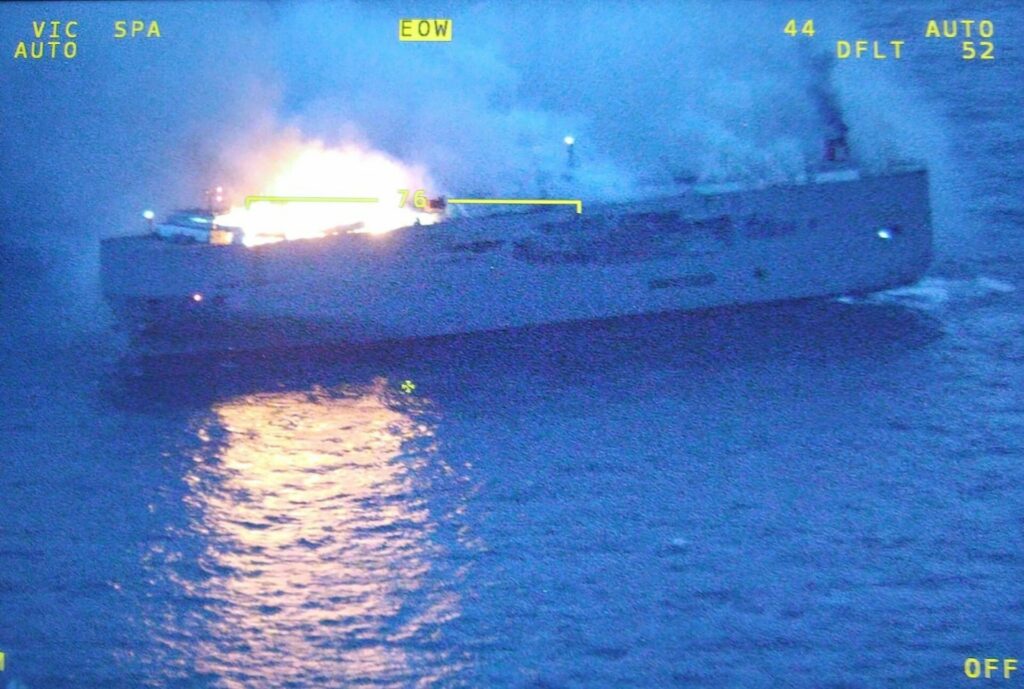Preliminary investigations indicate that the cargo of electric vehicles aboard the Fremantle Highway car carrier is in salvageable condition. The fire broke out on the 25th of July, off the coast of the Netherlands, while the vessel was on its way from Germany to Egypt with almost 3,000 cars. One crew member lost their life while others were injured, with some having to jump overboard.
The fire was initially suspected to have been triggered by a burning EV, but officially, the cause is still unknown. However, new information could point to the fire being unrelated to electric vehicles and triggered by either an ICE vehicle or something else entirely. Speaking to Dutch press, Peter Berdowski, CEO of the Boskalis Salvage Company, said that at least 1,000 cars seem to be in good condition and perfectly moveable, including the 500 EVs.
Related: The Shipping World Isn’t Ready For The Risk EVs Pose, And Here’s Why
The same cannot be said for the vehicles on the upper decks. While the lower four of the twelve decks on the ship are reported to be relatively unscathed from the inferno, the remaining levels were severely damaged. According to Automotive Logistics, Berdowski says that the four uppermost decks are difficult to access, with melted vehicles resulting in the decks being “totally fused with the cars.”
Despite the fire having been extinguished, recovery of the salvageable vehicles is still going to be tricky for workers. There remains a risk of the damaged vehicles triggering another blaze, while the EVs have fully-charged high-voltage batteries.
The next step will be for the oil to be pumped out of the ship before the manufacturers of the cars, including VW, BMW, and Mercedes-Benz, can inspect the remaining undamaged units and confirm if they can be recovered.
Related: Nearly 500 EVs Are On Board That Cargo Ship Burning In The Ocean

Whatever the cause of the Fremantle Highway blaze, the risk of EV fires aboard ships is one that both the International Maritime Organization (IMO) and the International Union of Marine Insurance (IUMI) are investigating.
The IMO is set to evaluate new measures for ships transporting EVs. These could include new chemicals to douse flames, specialized EV fire blankets, battery-piercing fire hose nozzles, and proposals to segregate EVs. Meanwhile, the IUMI is has stressed that to date, “no fire onboard a ro-ro or PCTC has been proven to have been caused by a factory-new EV,” saying that risks must be identified and mitigated when it comes to EVs.
According to a research project supported by the IUMI, EV fires are not more common or more intense than ICE vehicle fires. Additionally, toxins released from both types of fire are similar. However, a significant risk remains in the form of thermal runaway, which can happen when EV batteries are exposed to fire. In such a scenario, lithium-ion battery fires can be much more challenging to put out. On land, firefighters will often dig pits of water and dump burning cars into them. In the tight confines of a roll-on/roll-off ship, the complexity of extinguishing such blazes is exponentially higher. Access for firefighters, as well as securing the correct PPE and deploying suitable equipment to put out such a fire, makes tackling these infernos far more challenging.




